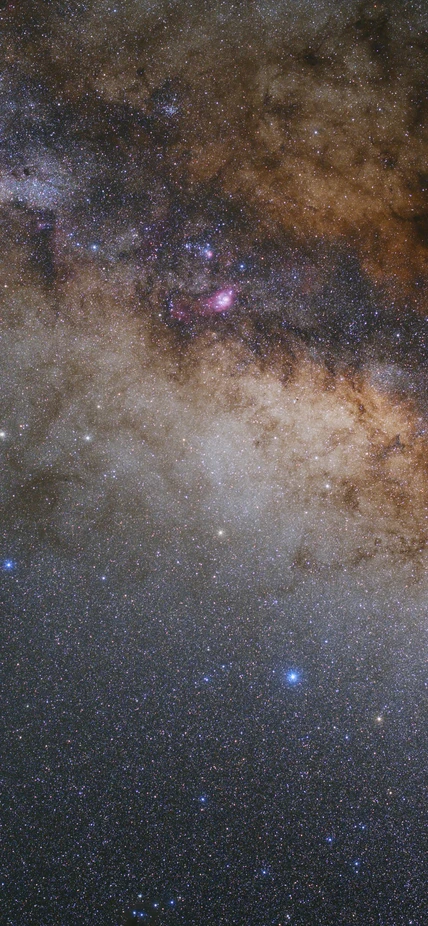Dear friends of Carnegie Observatories,
As 2016 comes to an end, I want to reflect on the scientific accomplishments that took place at The Observatories this past year.
 In January, Carnegie-Princeton fellow Benjamin Shappee reported the discovery of the most luminous supernova ever observed. The amount of energy released in this explosion cannot easily be explained with our current models of such events. New work by fellow Jennifer van Saders published in Nature examined the rotation rate of older stars and found that a method commonly-used to determine the ages of these stars must be recalibrated. Jennifer's work also suggests that our own Sun may be close to making a transition in its magnetic field. In another paper published in Nature, Carnegie's Josh Simon and colleagues studied the chemical composition of stars in a recently discovered dwarf galaxy known as Reticulum II. They find evidence suggesting that the heaviest elements in stars are likely produced in the rare collisions between neutron stars. Josh also reported new observations this year of KIC 8462852, the Milky Way's most peculiar star. The latest data confirm that the star's brightness is indeed decreasing in ways that are not easy to understand. Josh and others will continue to study this strange object with the hope of determining its true nature.
In January, Carnegie-Princeton fellow Benjamin Shappee reported the discovery of the most luminous supernova ever observed. The amount of energy released in this explosion cannot easily be explained with our current models of such events. New work by fellow Jennifer van Saders published in Nature examined the rotation rate of older stars and found that a method commonly-used to determine the ages of these stars must be recalibrated. Jennifer's work also suggests that our own Sun may be close to making a transition in its magnetic field. In another paper published in Nature, Carnegie's Josh Simon and colleagues studied the chemical composition of stars in a recently discovered dwarf galaxy known as Reticulum II. They find evidence suggesting that the heaviest elements in stars are likely produced in the rare collisions between neutron stars. Josh also reported new observations this year of KIC 8462852, the Milky Way's most peculiar star. The latest data confirm that the star's brightness is indeed decreasing in ways that are not easy to understand. Josh and others will continue to study this strange object with the hope of determining its true nature.We have also made great progress this year in studying the early universe. Eric Persson and his collaborators used data from the Fourstar camera on Carnegie's 6.5-meter Baade Telescope at Las Campanas Observatory in Chile to study a sample of over 70,000 ancient galaxies. This large sample is allowing the first reliable census of galaxies up to 12.5 billion light years away. Similarly, a new sample of quasars at high redshift found by Carnegie-Princeton fellow Eduardo Banados is allowing us to study the first supermassive black holes in the universe. Meanwhile, new simulation work by Carnegie-Caltech fellow Andrew Wetzel produced the most-detailed simulation ever of a galaxy like the Milky Way, tracing it from right after the big bang to the present day.
 Closer to home, our scientists continue to discover and study new planetary systems around nearby stars. Our Origins fellow Johanna Teske led a team of Carnegie scientists that discovered three giant planets in a binary star system. The study of exoplanet systems like this one help provide clues on how Jupiter might have influenced our own Solar System.
Closer to home, our scientists continue to discover and study new planetary systems around nearby stars. Our Origins fellow Johanna Teske led a team of Carnegie scientists that discovered three giant planets in a binary star system. The study of exoplanet systems like this one help provide clues on how Jupiter might have influenced our own Solar System. As I hope the paragraphs above demonstrate, 2016 has been an important year in terms of new discoveries and our understanding of how the universe works. 2017 promises to be an equally exciting year as we celebrate the 100-year anniversary of the Mt. Wilson 100-inch Hooker telescope. Arguably the most important telescope ever built, it was this instrument that allowed Carnegie's Edwin Hubble to demonstrate the existence of galaxies beyond the Milky Way and discover the expansion of the universe. These observations launched the new fields of cosmology and extragalactic astronomy - areas Carnegie astronomers continue to excel in today. In celebration of this important anniversary, we will be hosting a range of public activities throughout the year starting with our popular spring lecture series and culminating in a special exhibit at The Huntington Library in November 2017.
In closing, I would like to thank you for your support of The Observatories through the years. Being at Carnegie is a lifelong dream for astronomers like myself. No other place offers the combination of complete scientific freedom and access to amazing resources. It has been our pleasure to share with you the excitement of Carnegie Science in 2016. I look forward to sharing more wonders of the universe with you next year.
Dr. John Mulchaey
Crawford H. Greenewalt Chair and Director
Carnegie Observatories
